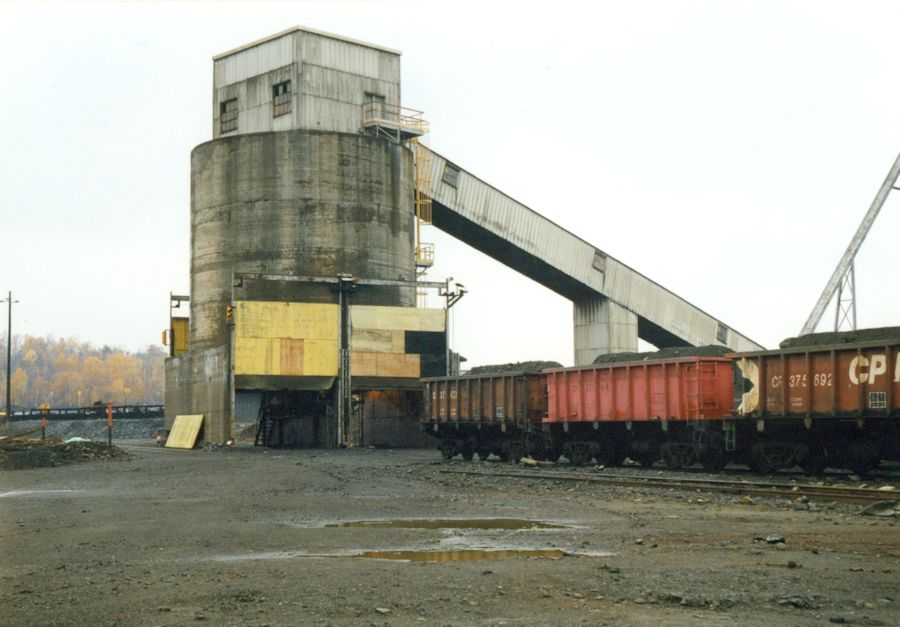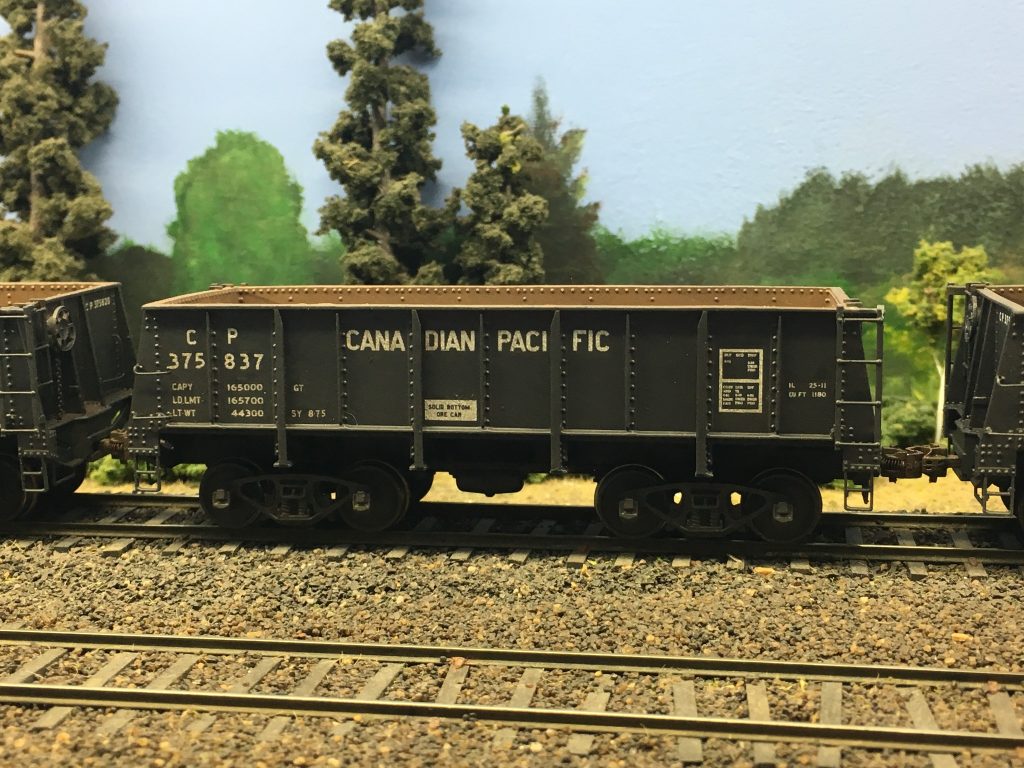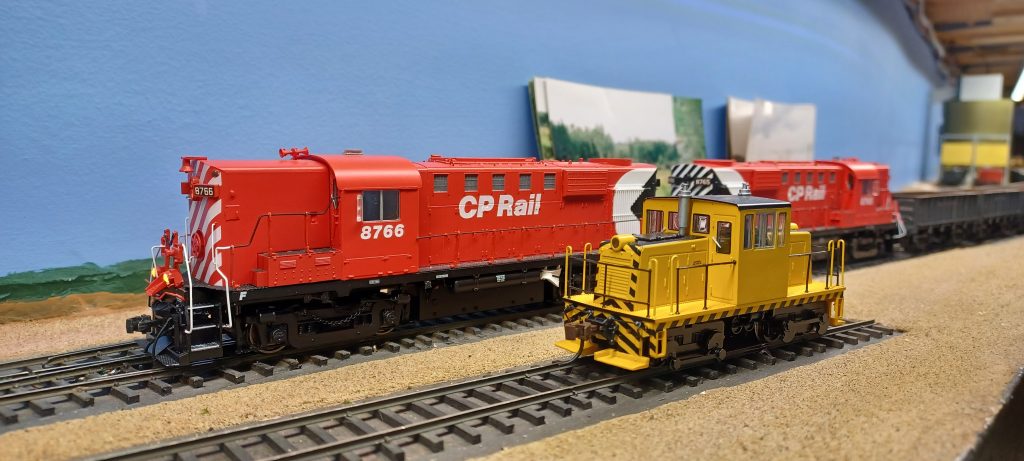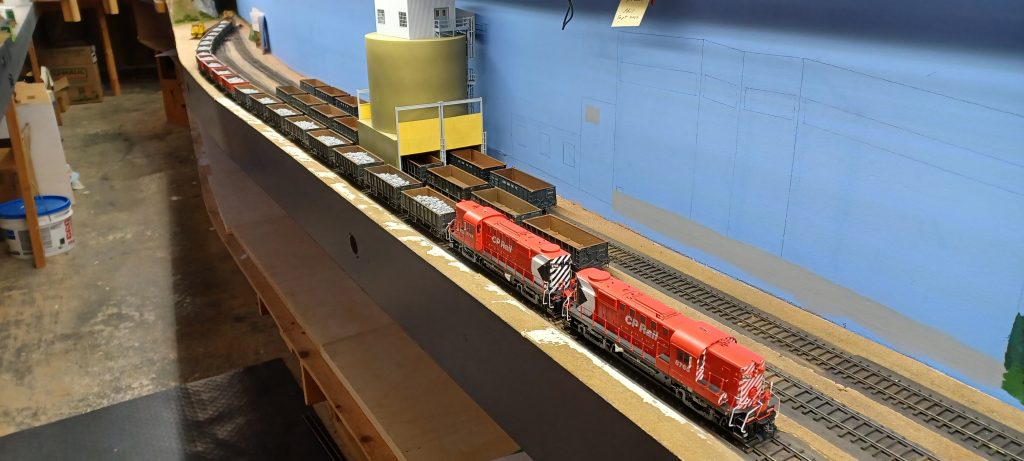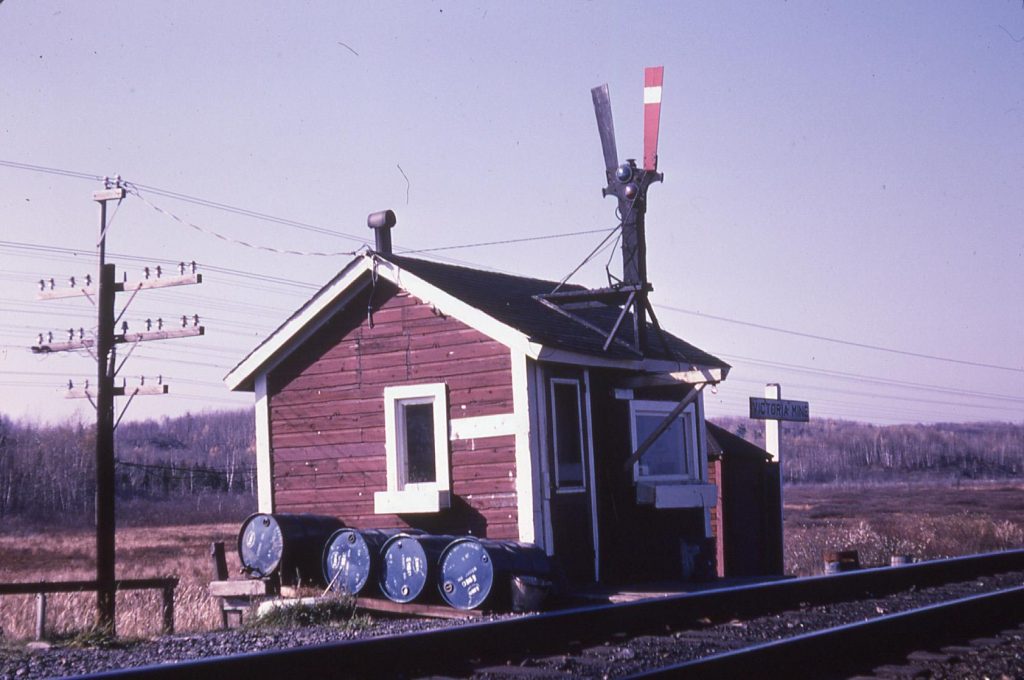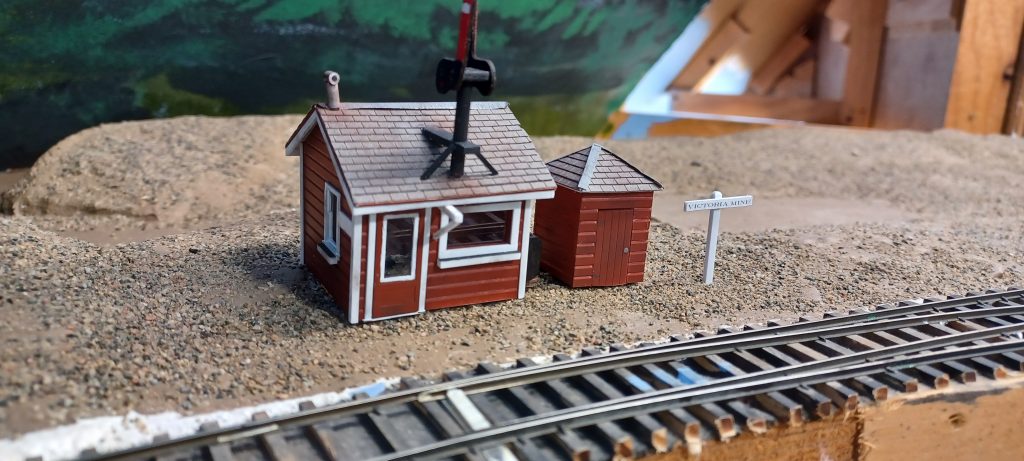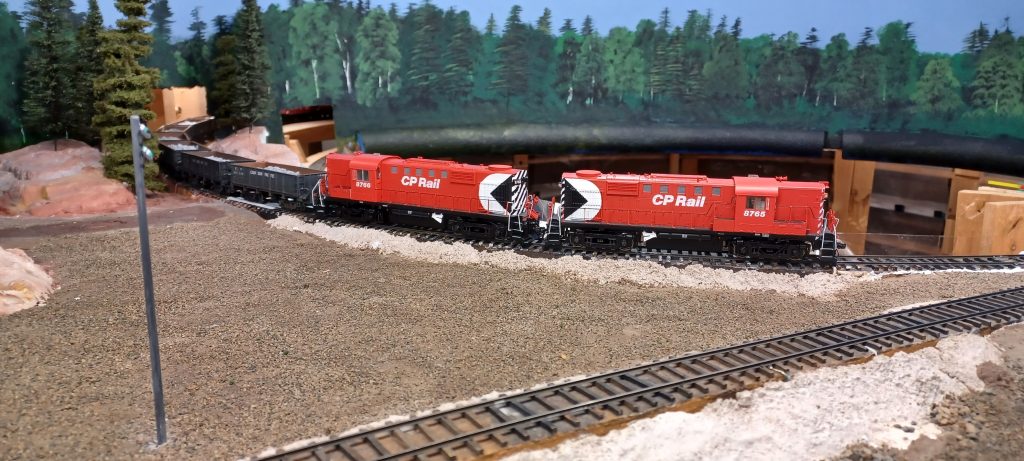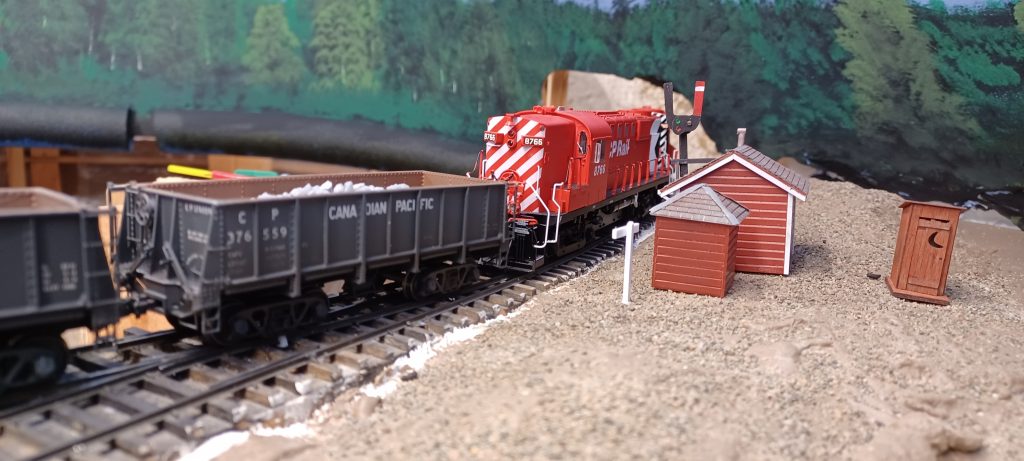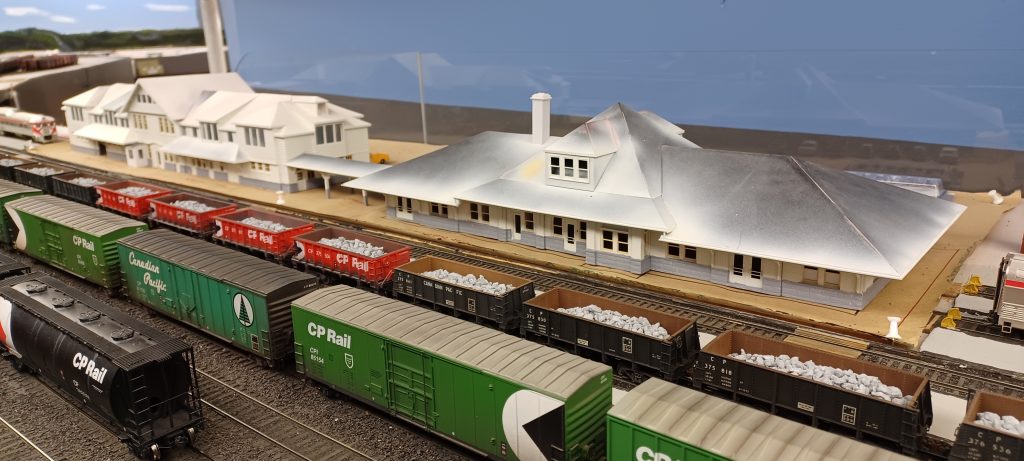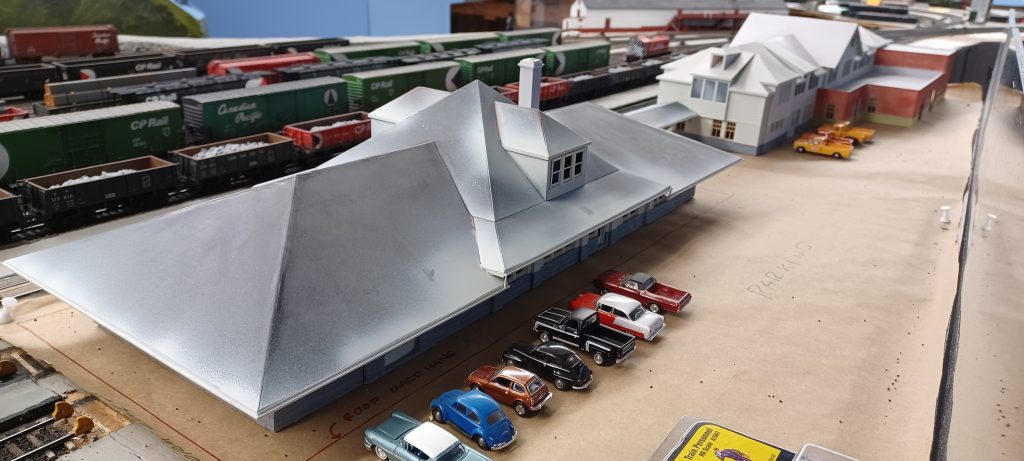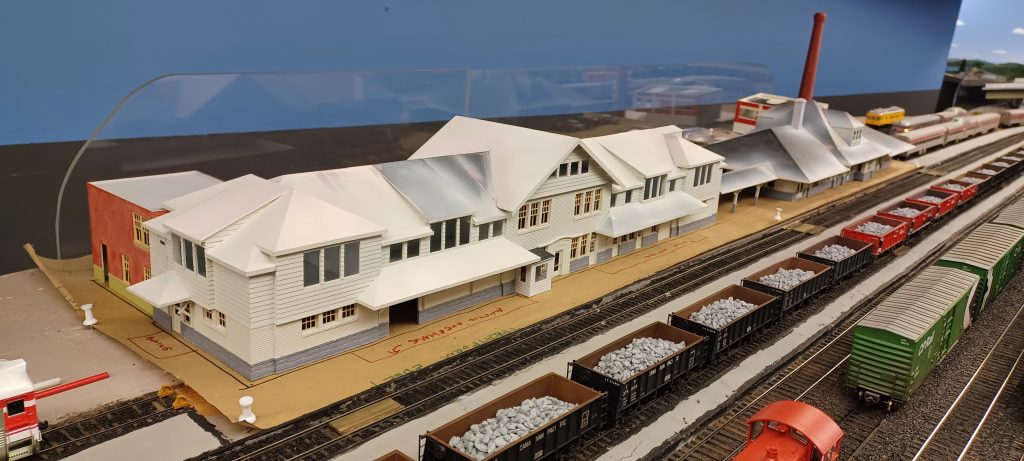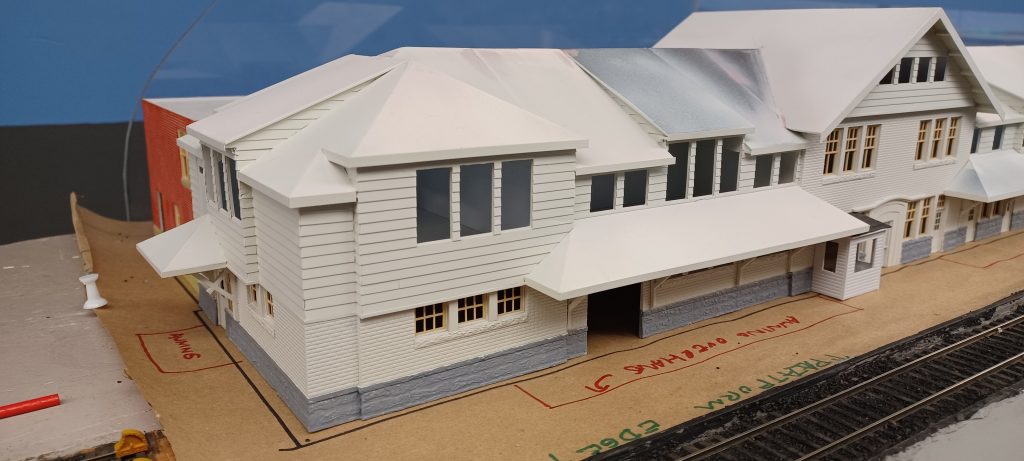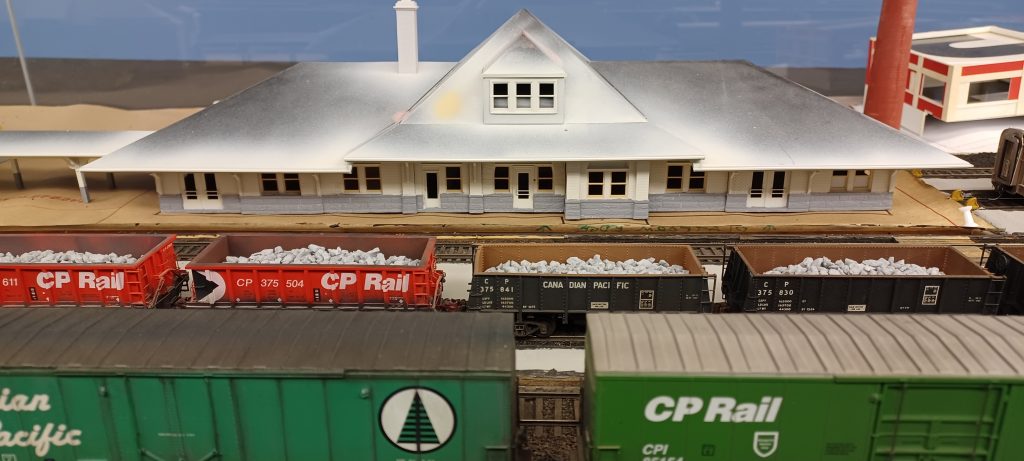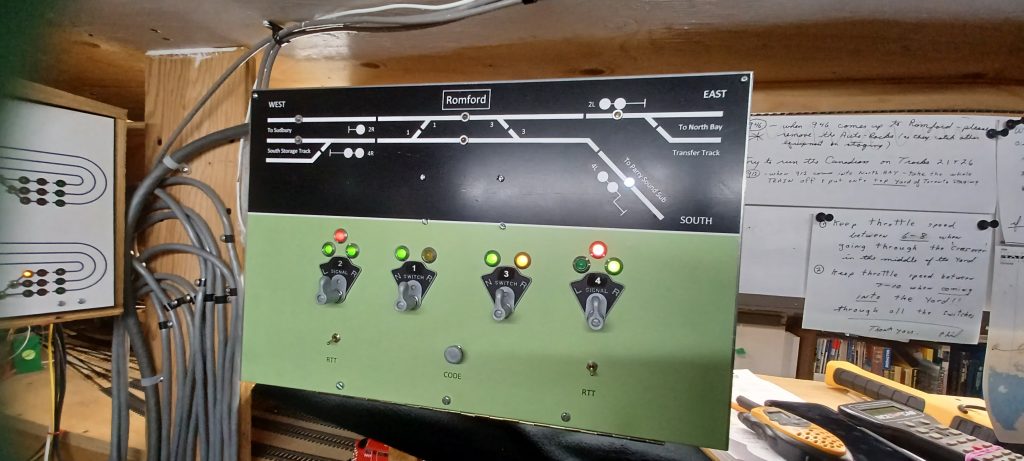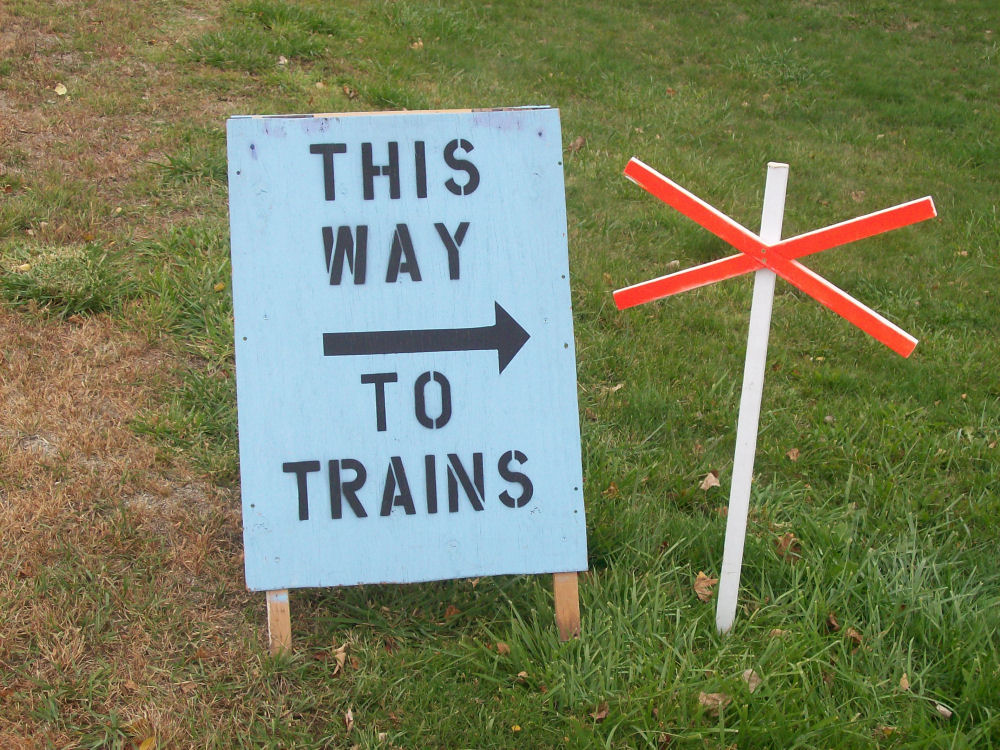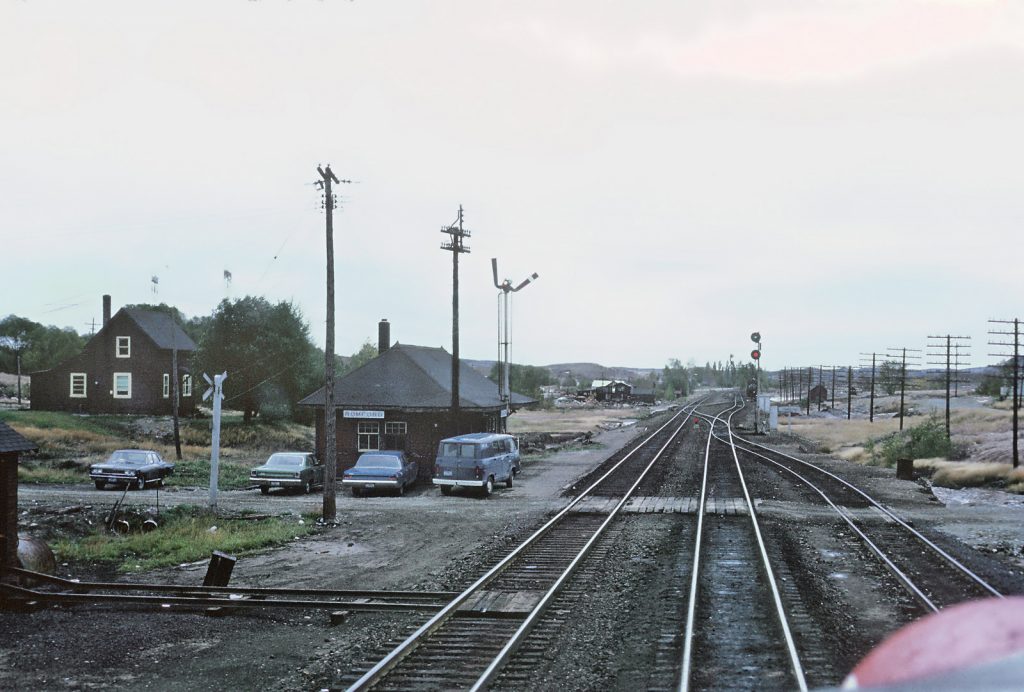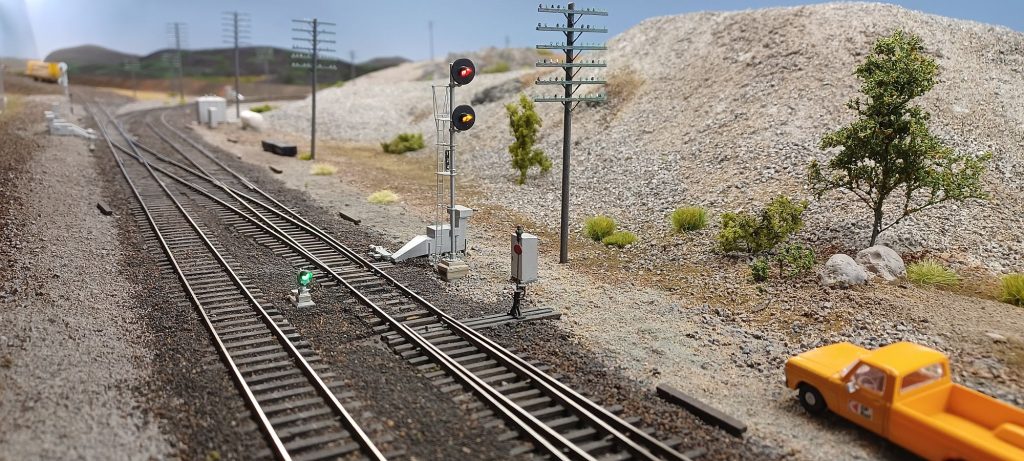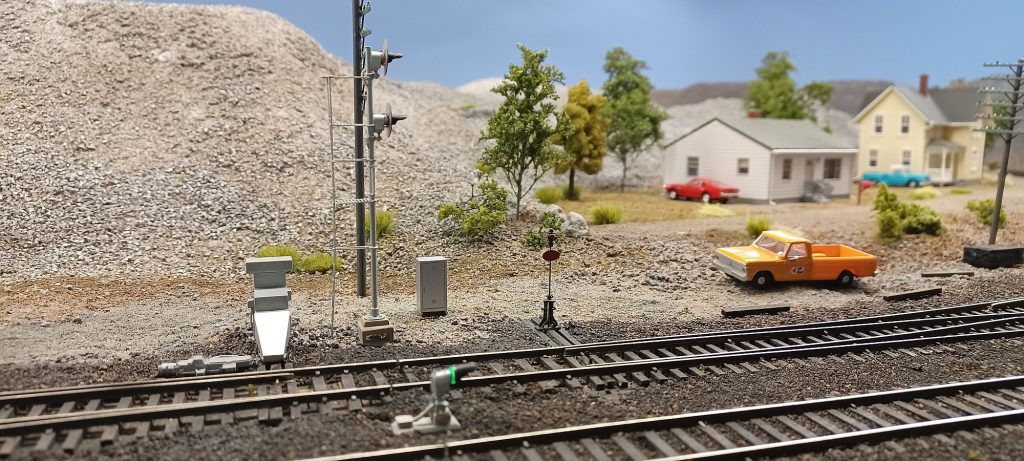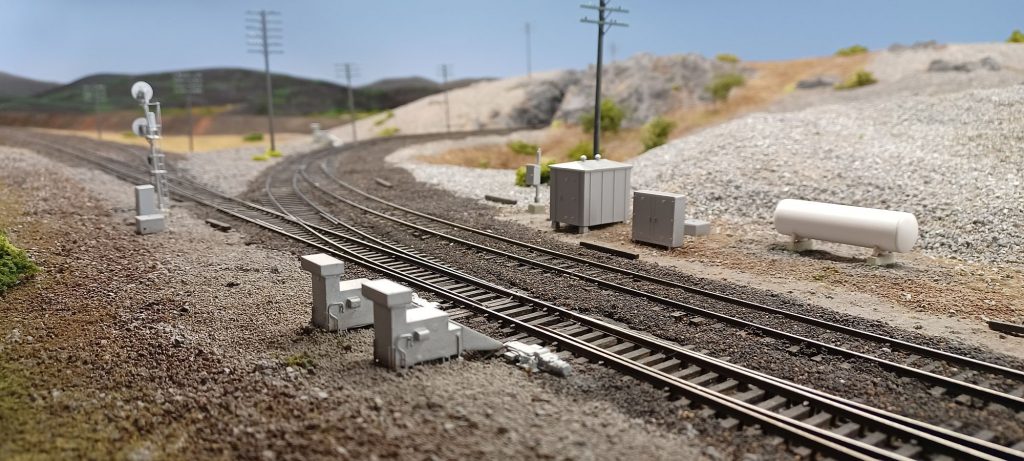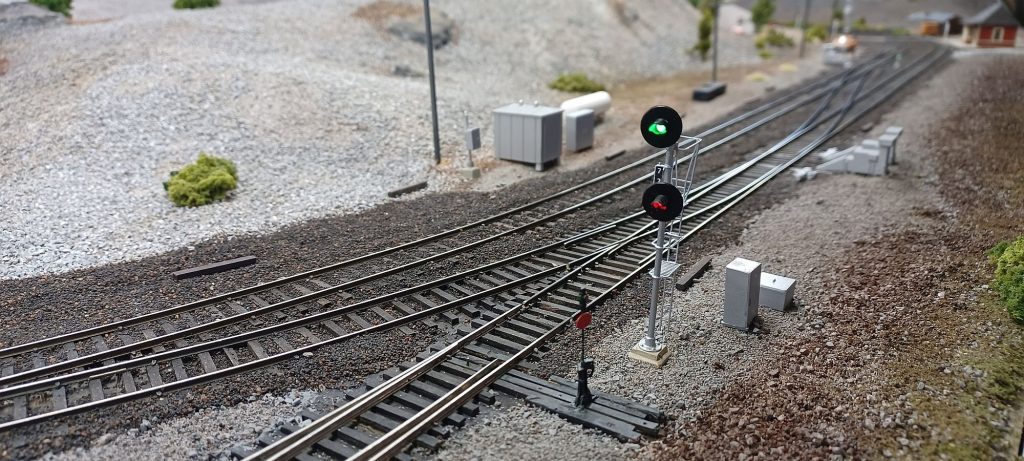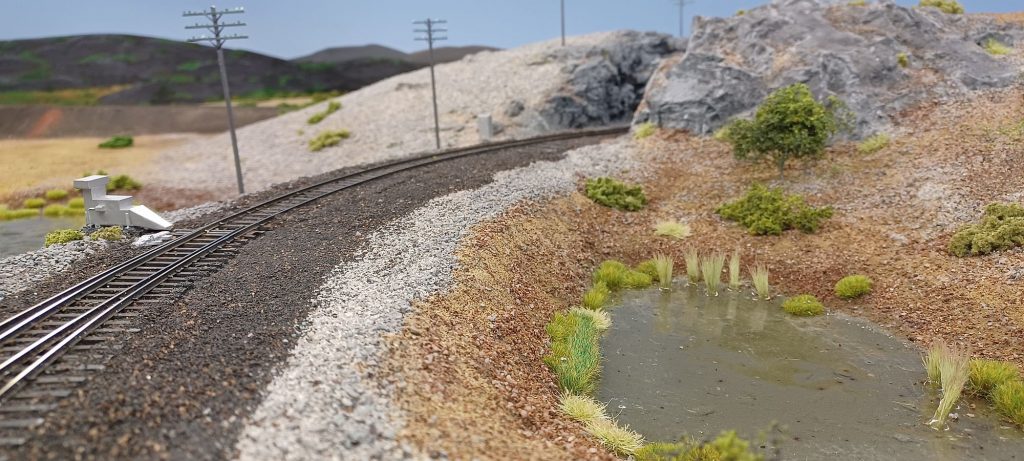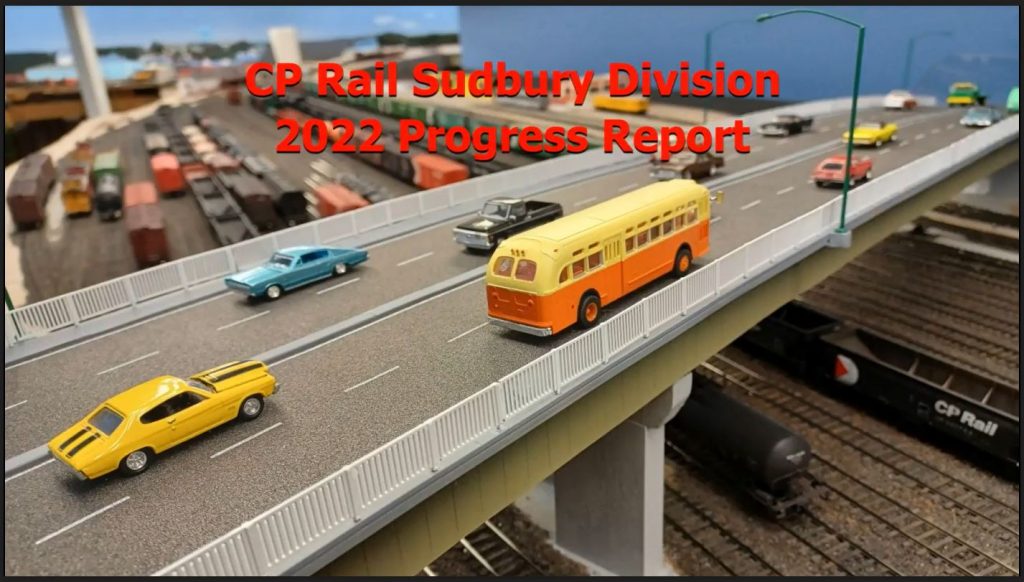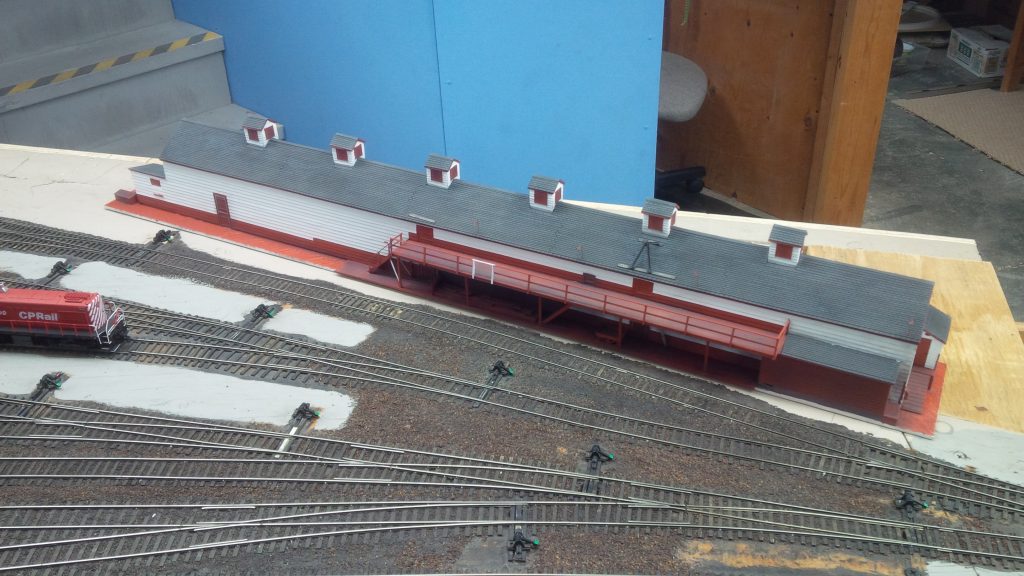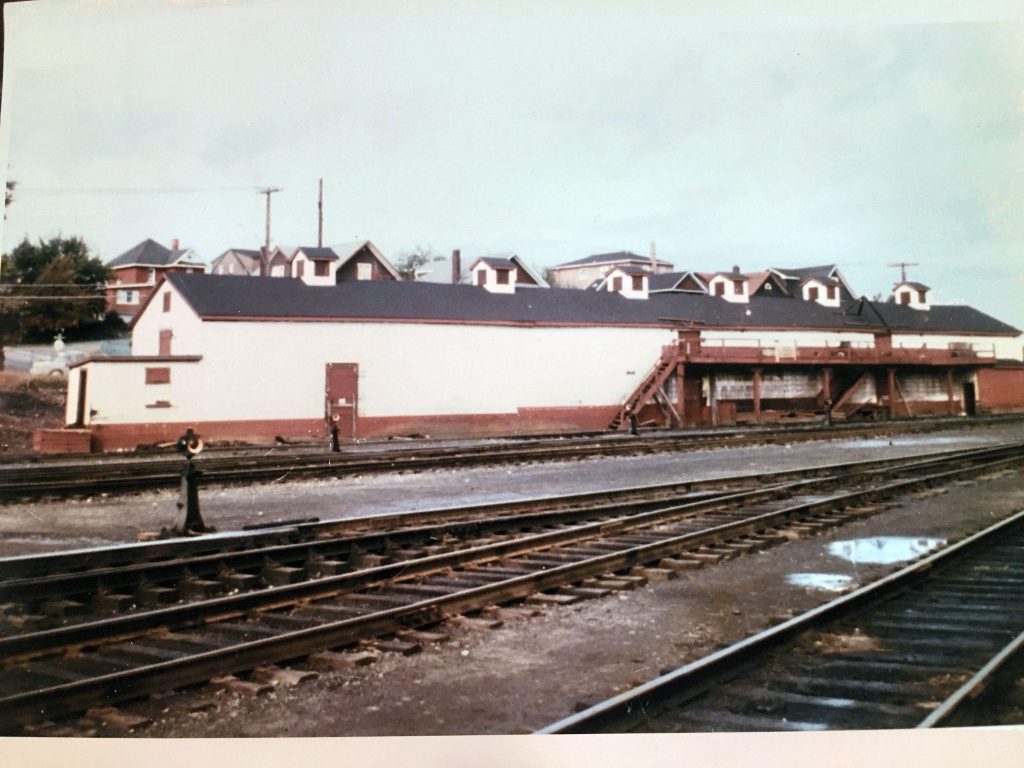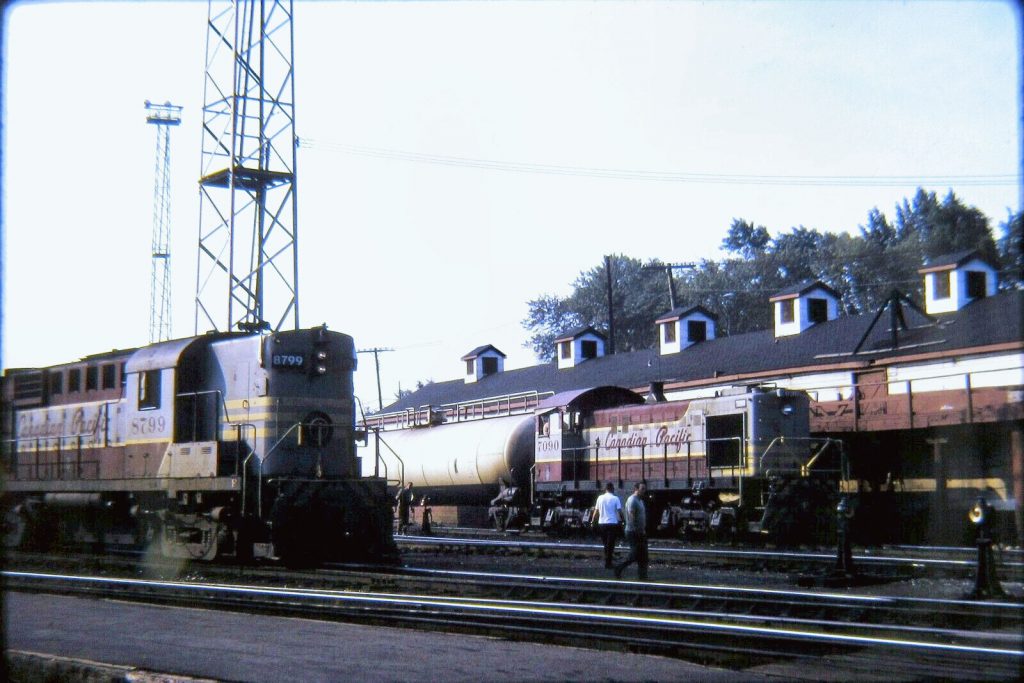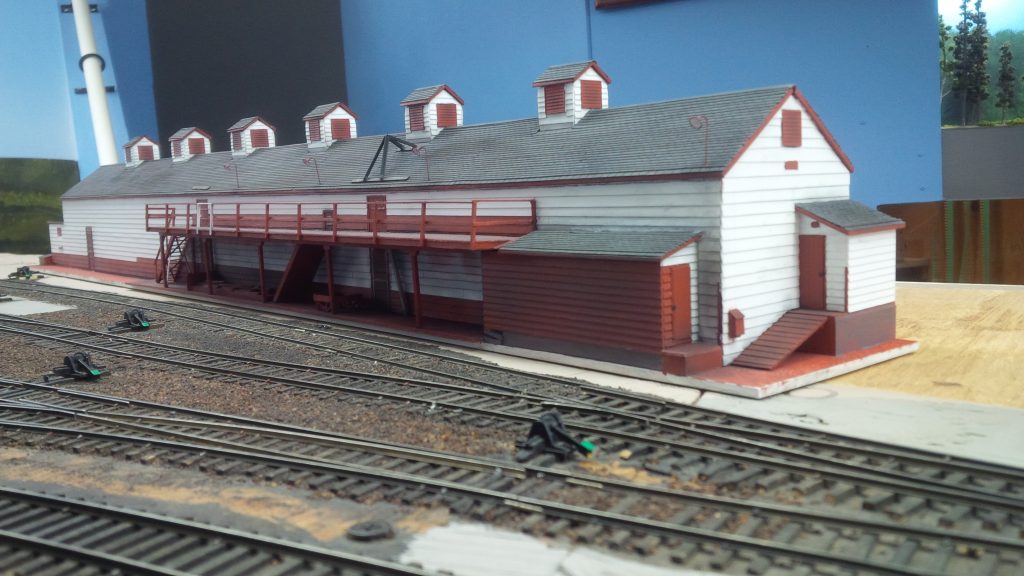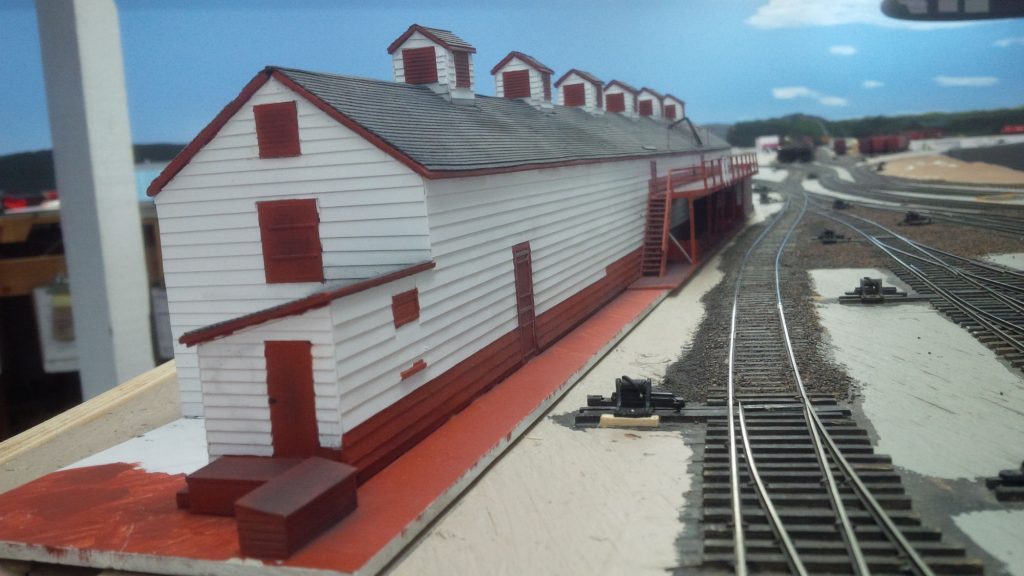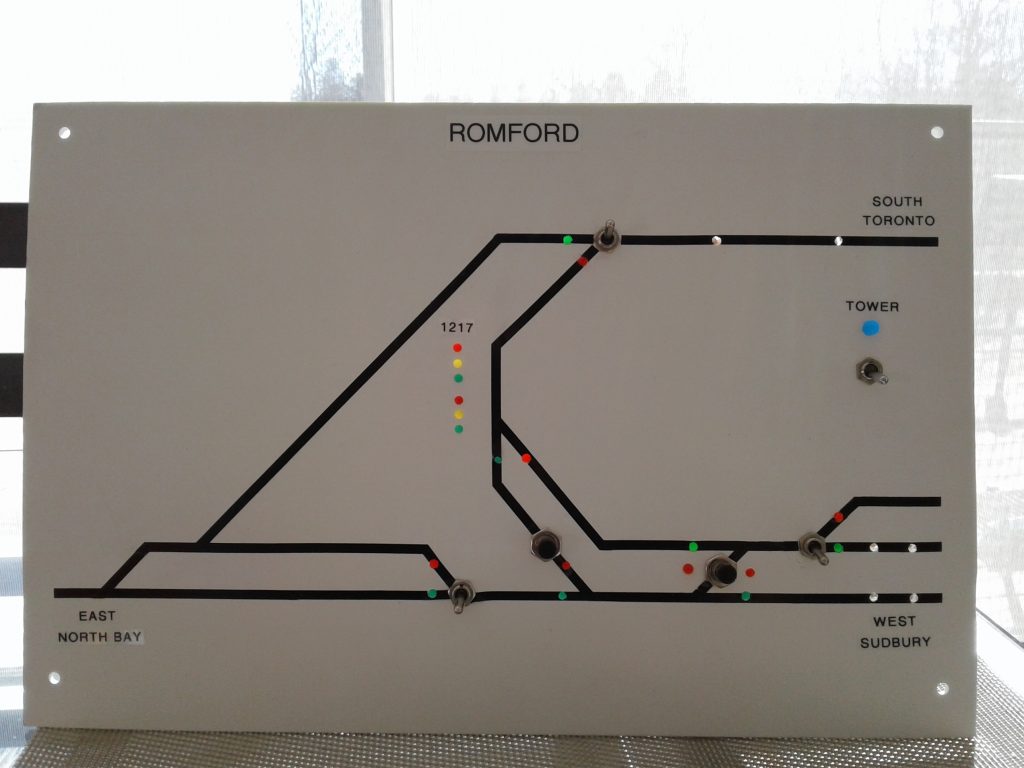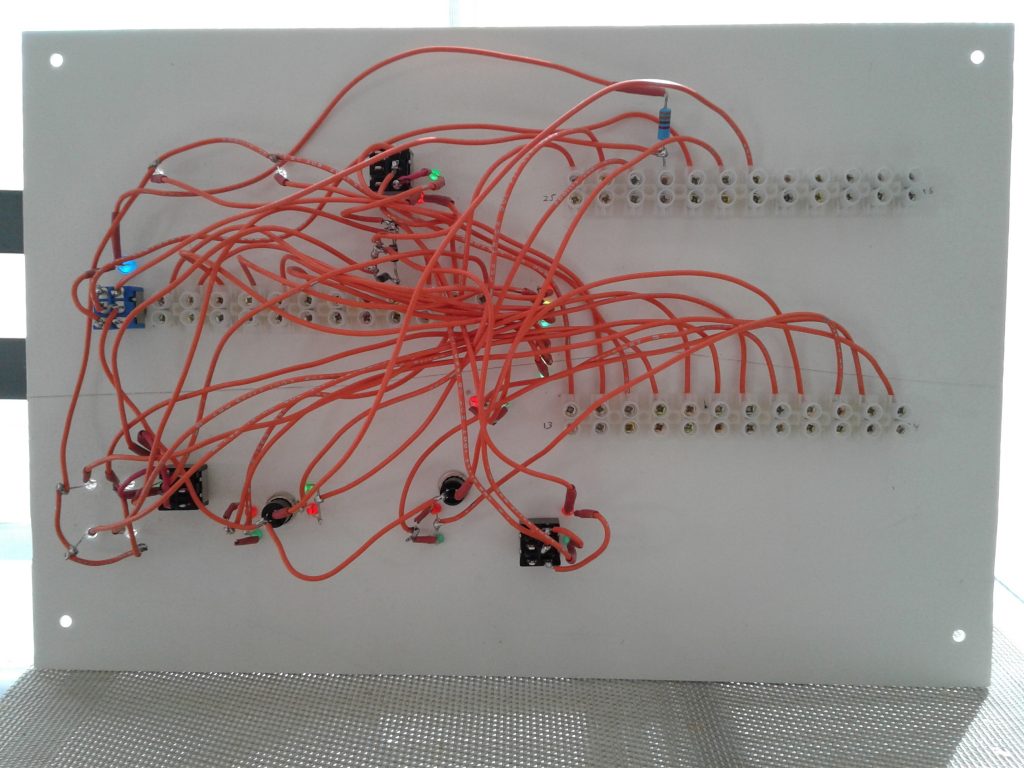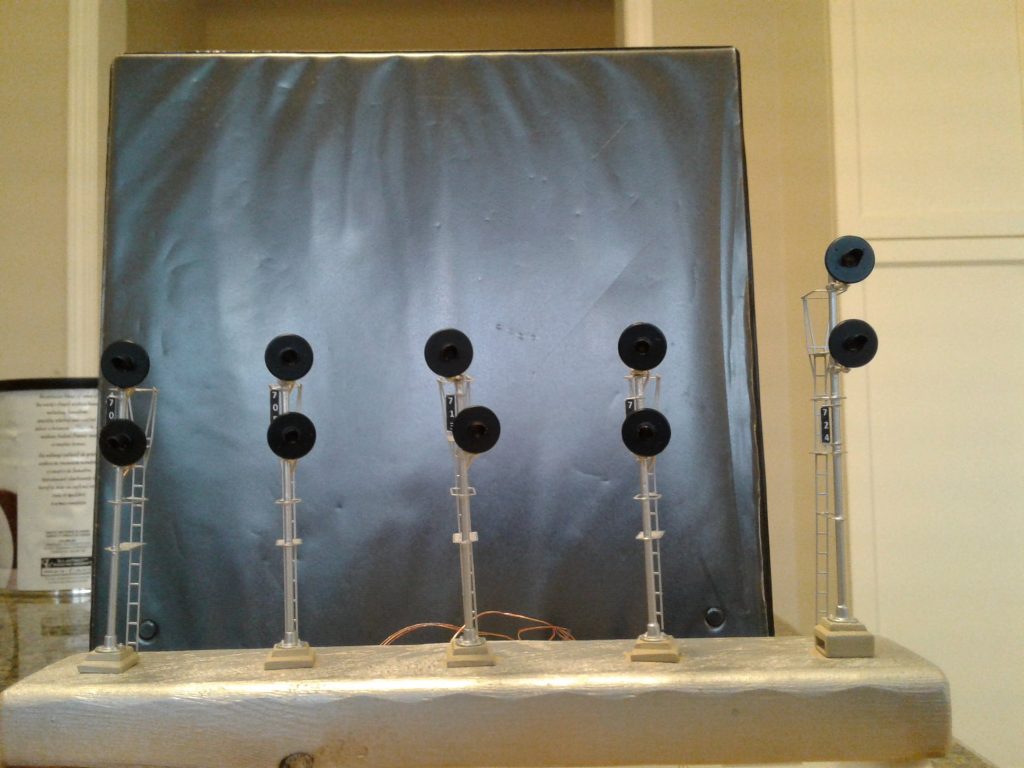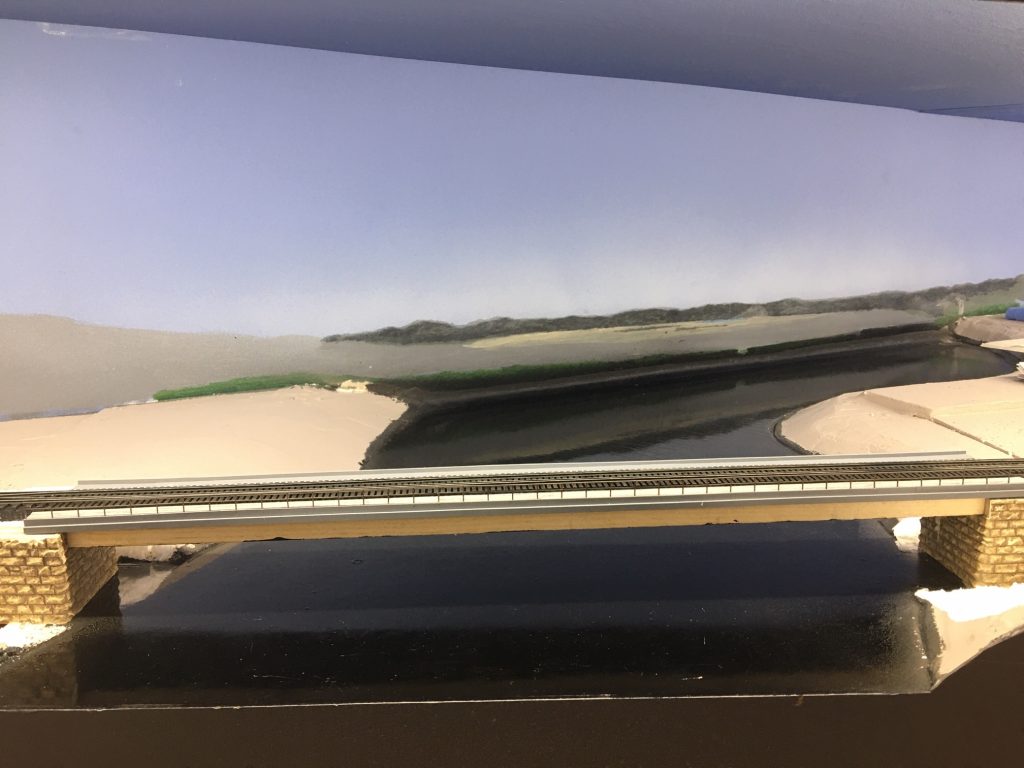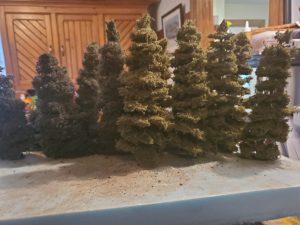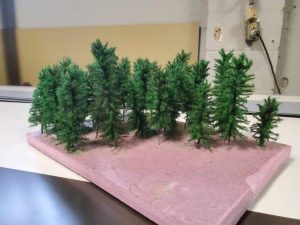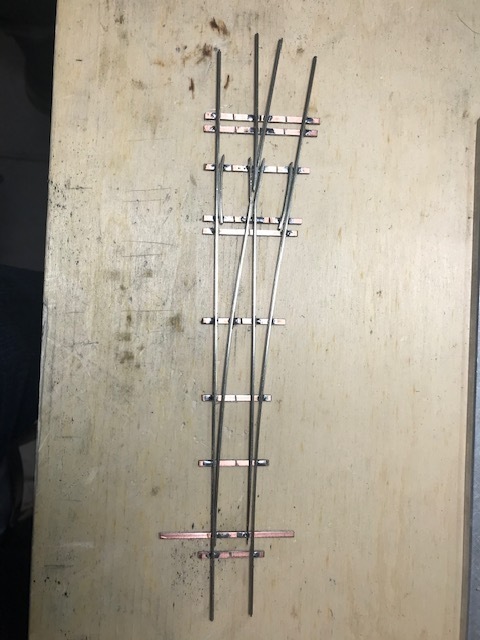Though our layout is essentially shut down each year over the summer months (from mid-May to the end of August), it is hardly a quiet time for the CP Sudbury Division. The summer season is when layout expansion work, heavy construction and miscellaneous major projects can occur without the interruption of club operating sessions or open houses to get in the way.
The summer of 2024 was particularly busy with a number of major projects including; a complete change-out of the turnout ground throws for Tortoise switch machines within our Copper Cliff / Creosote industrial area, CTC signaling and logic programming at Stinson siding, fluorescent to LED valence lighting replacement over many aisles, and the construction of a maintenance platform within our ‘sky helix’ that spirals between floors connecting Sprecher and Larchwood.
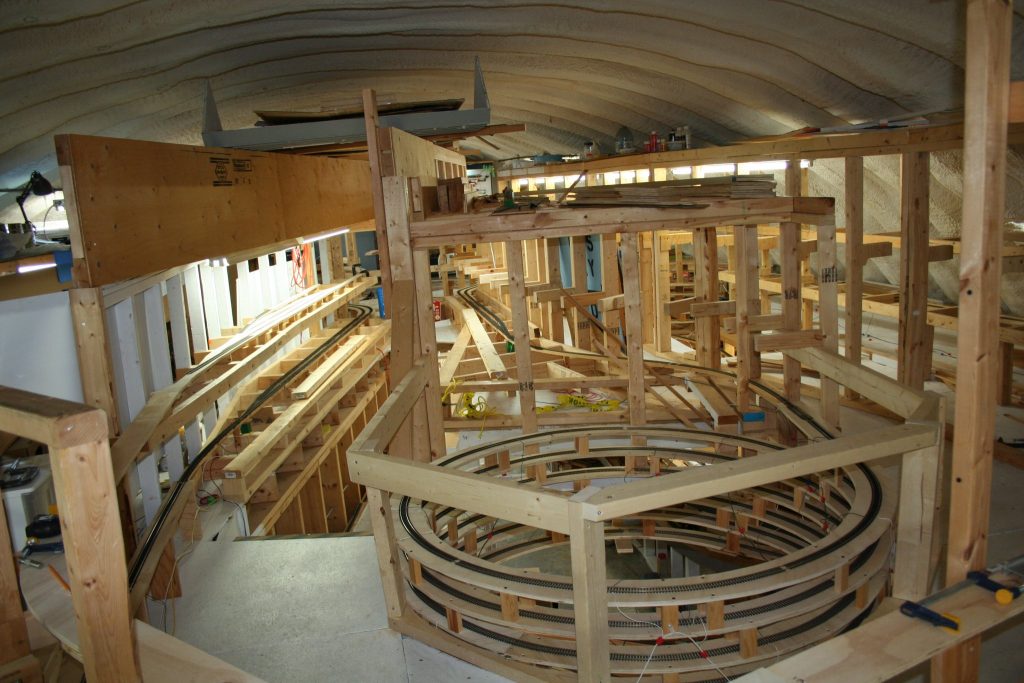
Possibly the most exciting project of the summer was a complete clean-out of all the stuff we’ve stored for many, many years now on the top floor. Well, the actual cleaning part sucked as it was tough and took what seemed forever, but it was done to clear the way for our Cartier Sub mainline to finally be completed. As August ended, we had already begun the benchwork for Sturgeon Falls, and planning for the huge 14-track staging yard (representing the entire CPR west of Cartier ON) that will be built above it. That is the exciting part.
Autumn and colder weather also marks the beginning of another operating season for the CP Sudbury Division layout, with five op sessions and two dates where we’re open for the public. A number of operational projects also occurred prior to the operating season beginning, mainly involving the addition and preparation of new equipment (weathering rolling stock, DCC programming of locomotives, etc.) along with any modifications or updates required by our car-forwarding/waybill system.
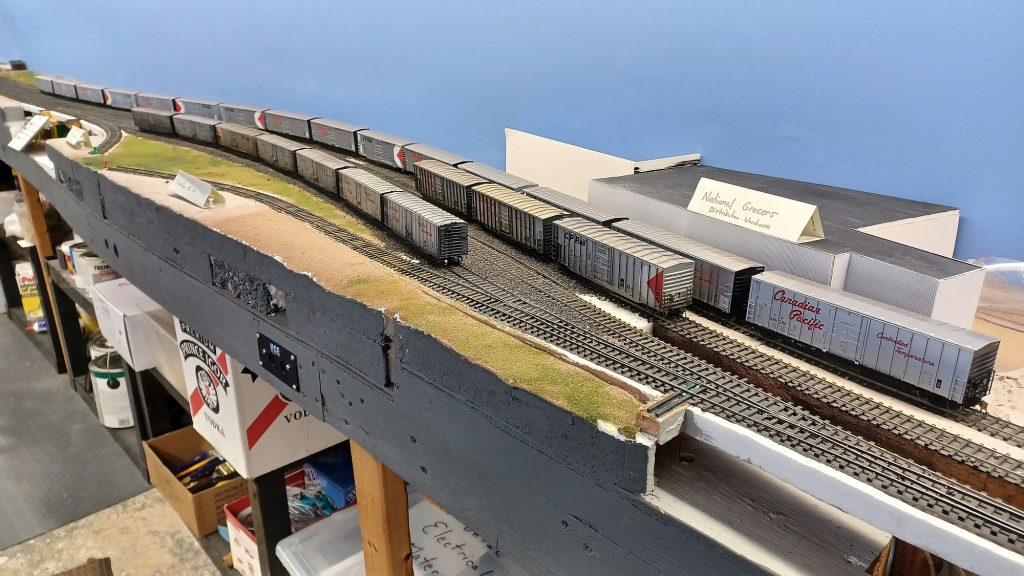
In addition to the usual operational projects, this summer also saw us replace an entire fleet of cars, and even a piece of office furniture. Replacements of car fleets are not common, as the vast majority of our rolling stock are high-quality models which fairly accurately represent their prototypes. But some of our freight cars are ‘placeholders’ so to speak. These are cars too important or iconic to not have within our operations, and so we utilize inaccurate models or ‘foobies’ (to use modeller’s jargon) that appear close enough. If or when accurate replacements become available then these foobie fleets get replaced, and we have blogged about this topic in the past.
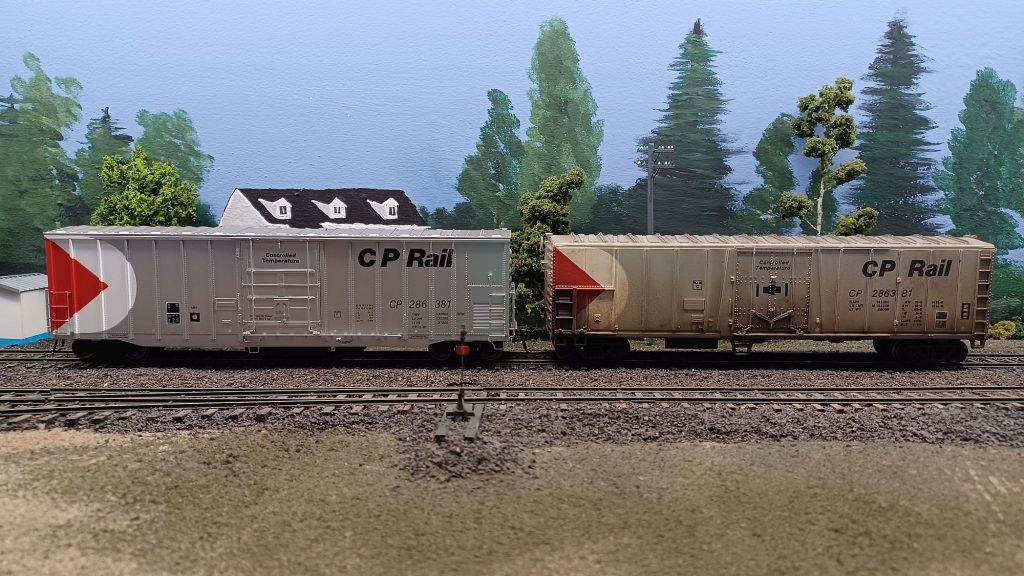
The mass replacement which occurred this past summer was our CP mechanical refrigerated boxcar fleet. These reefers were staples on CP’s hot transcon freights through the 1970s, with large blocks appearing right on the head-end of freights like #952. Our operations wouldn’t be right without them. So with the exception of a single 40ft kitbashed model of a CP 285600-series car, our entire fleet of mechanical reefers were stand-ins consisting of Athearn ‘blue-box’ models, and some Accurail outside-braced 50’ boxcar bashes. These were all retired thanks to a club bulk purchase of brand new Rapido NSC-built CP reefers.
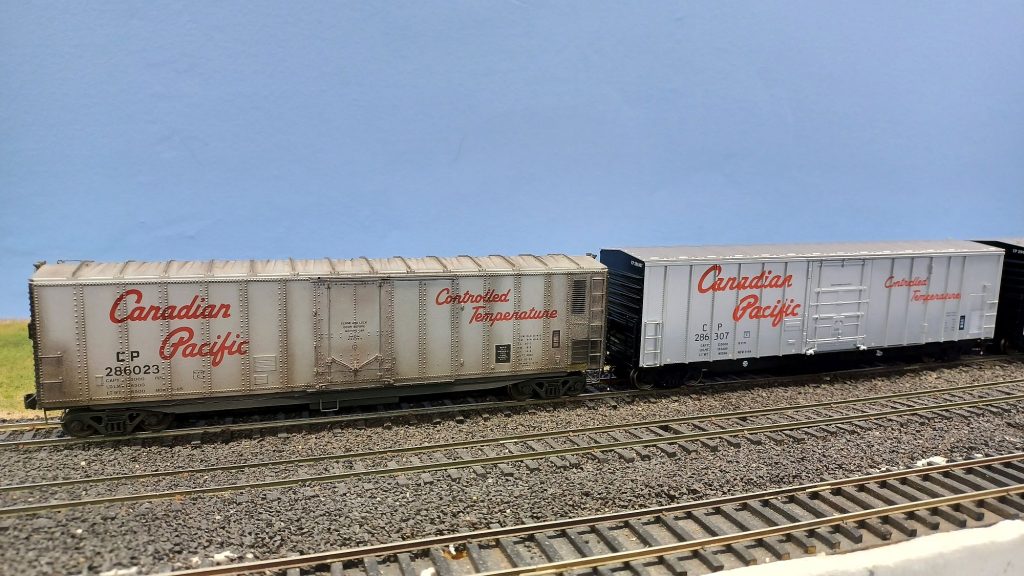
Replacing office fixtures is even more uncommon than rolling stock retirements, since there are so few that we utilize in club operations. In fact, we believe this to be the first instance. Our venerable and iconic Crew Call Board, a grid-marked whiteboard employed since our first operating sessions began well over 20 years ago, had to be replaced.
As the layout expanded and new freights continued to be added to our operations over the decades, we’d been stretching the old board past its original capacities. Three additional rows were squeezed in over time. We even saved room by listing both the Montreal and Toronto sections of “The Canadian” within one line. However, we broke the board after our first nickel ore train was inaugurated (INCO Job 2), and had no room left when the time came to add hotshot transcon freights 901/902 to our operating scheme.
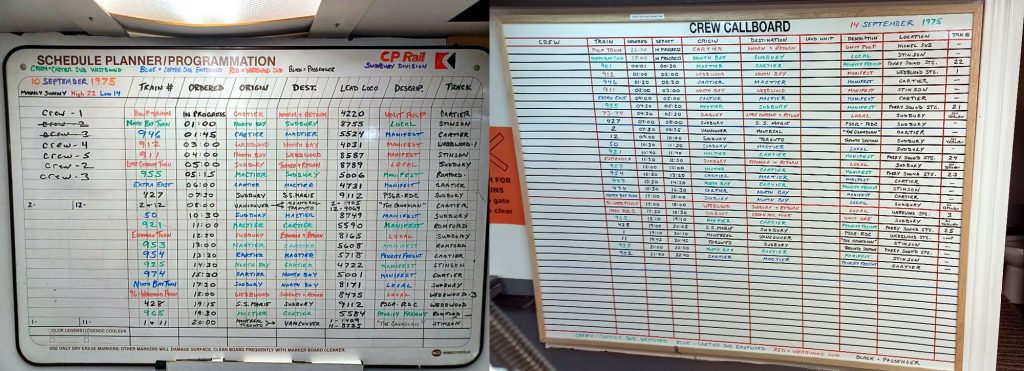
With our resent summer work beginning the push to finish our Cartier Sub mainline from North Bay to Cartier staging, it wasn’t hard to think of building towards the future. So, we acquired a very large whiteboard and grid-marked it with 40 rows. All those rows will allow us to list every mainline freight and local that was ever run on a daily basis over the CP Sudbury Division, with accommodation for a few extras and second sections too. Our only worry now is will we have enough operators to run them all? Thinking back to our lean beginnings during the WRMRC’s fledgling years, that is actually a remarkable thing to have to worry about.

